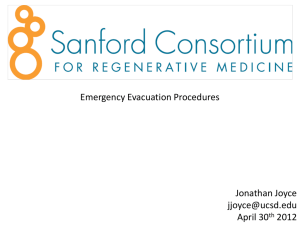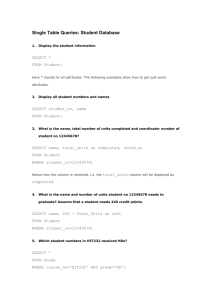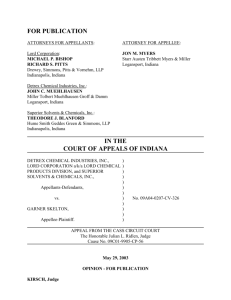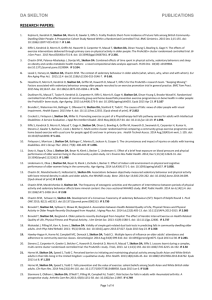Treatise
advertisement
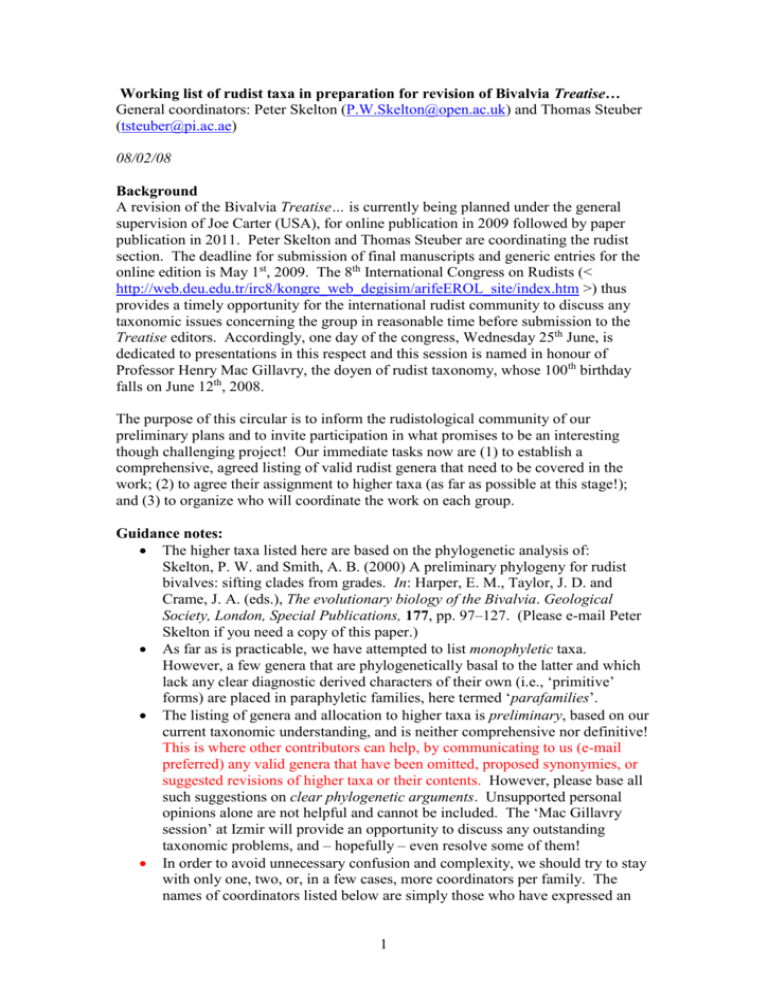
Working list of rudist taxa in preparation for revision of Bivalvia Treatise… General coordinators: Peter Skelton (P.W.Skelton@open.ac.uk) and Thomas Steuber (tsteuber@pi.ac.ae) 08/02/08 Background A revision of the Bivalvia Treatise… is currently being planned under the general supervision of Joe Carter (USA), for online publication in 2009 followed by paper publication in 2011. Peter Skelton and Thomas Steuber are coordinating the rudist section. The deadline for submission of final manuscripts and generic entries for the online edition is May 1st, 2009. The 8th International Congress on Rudists (< http://web.deu.edu.tr/irc8/kongre_web_degisim/arifeEROL_site/index.htm >) thus provides a timely opportunity for the international rudist community to discuss any taxonomic issues concerning the group in reasonable time before submission to the Treatise editors. Accordingly, one day of the congress, Wednesday 25th June, is dedicated to presentations in this respect and this session is named in honour of Professor Henry Mac Gillavry, the doyen of rudist taxonomy, whose 100th birthday falls on June 12th, 2008. The purpose of this circular is to inform the rudistological community of our preliminary plans and to invite participation in what promises to be an interesting though challenging project! Our immediate tasks now are (1) to establish a comprehensive, agreed listing of valid rudist genera that need to be covered in the work; (2) to agree their assignment to higher taxa (as far as possible at this stage!); and (3) to organize who will coordinate the work on each group. Guidance notes: The higher taxa listed here are based on the phylogenetic analysis of: Skelton, P. W. and Smith, A. B. (2000) A preliminary phylogeny for rudist bivalves: sifting clades from grades. In: Harper, E. M., Taylor, J. D. and Crame, J. A. (eds.), The evolutionary biology of the Bivalvia. Geological Society, London, Special Publications, 177, pp. 97–127. (Please e-mail Peter Skelton if you need a copy of this paper.) As far as is practicable, we have attempted to list monophyletic taxa. However, a few genera that are phylogenetically basal to the latter and which lack any clear diagnostic derived characters of their own (i.e., ‘primitive’ forms) are placed in paraphyletic families, here termed ‘parafamilies’. The listing of genera and allocation to higher taxa is preliminary, based on our current taxonomic understanding, and is neither comprehensive nor definitive! This is where other contributors can help, by communicating to us (e-mail preferred) any valid genera that have been omitted, proposed synonymies, or suggested revisions of higher taxa or their contents. However, please base all such suggestions on clear phylogenetic arguments. Unsupported personal opinions alone are not helpful and cannot be included. The ‘Mac Gillavry session’ at Izmir will provide an opportunity to discuss any outstanding taxonomic problems, and – hopefully – even resolve some of them! In order to avoid unnecessary confusion and complexity, we should try to stay with only one, two, or, in a few cases, more coordinators per family. The names of coordinators listed below are simply those who have expressed an 1 interest in contributing so far, and, again, are not definitive. The job of the coordinators will be to collate the generic descriptions and illustrations for each family, though of course they are encouraged to call on the help of any collaborators for information and figures concerning particular genera. If you particularly wish to be involved, please let us know (stating the taxa in which you are interested). We will circulate guidelines on the required format for the generic descriptions at a later date. At this preliminary stage, though, we want to concentrate on completing the list of taxa to be covered and, as far as possible, to agree on their assignments to higher taxa. Please send all communications concerning this preliminary listing to us (email preferred, copied to both general coordinators) by Monday March 31st. This will enable us to plan next steps in good time before the meeting in Izmir. CLASSIFICATION Order HIPPURITOIDA Newell, 1965 (emended here to comprise only rudists, so excluding ‘megalodonts’) Alternative names (ex ‘Les Rudistes’ of Lamarck, 1819): RUDISTA De Blainville, 1825; RUDISTAE Lamarck, 1819 (Dechaseaux, C. 1952, Traité de Paléontologie, Tome II, Masson). …possible topic for discussion. Comment: names above family group are not regulated by ICZN (Ride et al., 1999, Art 1.2.2), but Newell (1965, Am. Museum Novitates, 2206, 1-25) proposed ordinal names based on nomenclatural types (hence ‘Hippuritoida’) and his scheme was adopted in the Bivalvia Treatise… first edition (1969). Superfamily REQUIENIOIDEA new name Type genus: Requienia Matheron, 1843 Diagnosis: Attached valve = left valve Parafamily ‘Epidiceratidae’ Rengarten, 1950 [coord. Peter Skelton] 1. Epidiceras (including Eo-, Meso-, Para- and Megadiceras) 2. Heterodiceras 3. Plesiodiceras Family Requieniidae Douvillé, 1914 [coord. Jean-Pierre Masse] 1. Requienia 2. Bayleia 3. Bayleoidea 4. Hypelasma 5. Kugleria 6. Lovetchenia 7. Matheronia (including Monnieria) 8. Pseudotoucasia 9. Toucasia (including Apricardia) Superfamily HIPPURITOIDEA Gray, 1848 (nom. transl. Newell, 1965, ex Hippuritidae Gray, 1848) 2 Type genus: Hippurites Lamarck, 1801 Diagnosis: Attached valve = right valve Parafamily ‘Diceratidae’ Dall, 1895 [coord. Peter Skelton] 1. Diceras (including Macrodiceras) 2. Valletia Clade 1: Family Caprinidae d’Orbigny, 1847 (caprinids s.s.) [coord. Peter Skelton & Jean-Pierre Masse] Subfamily Caprininae d’Orbigny, 1847 1. Caprina 2. Offneria 3. Orthoptychus 4. Pachytraga 5. Praecaprina 6. Pseudocaprina 7. Schiosia 8. Sphaerucaprina Subfamily Caprinuloidinae Mac Gillavry, 1970 1. Caprinuloidea 2. Amphitriscoelus 3. Coalcomana 4. Conchemipora 5. Guzzyella 6. Huetamia 7. Immanitas 8. Jalpania 9. Kimbleia 10. Mexicaprina 11. Muellerrriedia 12. Oedomyophorus 13. Pantojaloria 14. Planocaprina 15. Retha 16. Texicaprina Clade 2a: Parafamily ‘Monopleuridae’ Munier-Chalmas, 1873 [coord. Peter Skelton & Jean-Pierre Masse] 1. Monopleura 2. Arnaudia 3. Glossomyophorus 4. Stenopleura 5. New genus (new Qishn taxon, cf Glossomyophorus) 6. New genus? (ex ‘Agriopleura’ darderi) 3 Family Radiolitidae d’Orbigny, 1847 (including Agriopleura) [coord. JeanPierre Masse, José-Maria Pons, Thomas Steuber & ???] 1. Radiolites 2. Agriopleura 3. Apulites 4. Archaeoradiolites 5. Biradiolites 6. Bournonia 7. Chiapasella 8. Colveraia (?including Branislavia, Balabania, Hatayia, Klinghardtites and Lattenbergites) 9. Darandeella 10. Durania 11. Eoradiolites 12. Favus (new name needed; name pre-occupied) 13. Fossulites 14. Fundinia 15. Glabrobournonia 16. Gorjanovicia 17. Joufia (including Parasayvagesia) 18. Katzeria 19. Kuehnia 20. Lapeirousella 21. Lapeirousia 22. Macgillavryia 23. Medeella 24. Milovanovicia 25. Miseia 26. Monopilarites 27. Neoradiolites 28. Osculigera 29. Petkovicia 30. Praelapeirousia 31. Praeradiolites 32. Pseudopolyconites 33. Pseudosabinia (unless included here with Sabinia?) 34. Radiolitella 35. Sauvagesia 36. Sphaerulites 37. Tampsia 38. Thyrastylon 39. Vautrinia Clade 2b: Parafamily Polyconitidae Mac Gillavry, 1937 [coord. Peter Skelton & JeanPierre Masse] 1. Polyconites 2. ?Artigesia 3. ?Caprotina (s.s) 4. ?Chaperia 4 5. 6. 7. 8. 9. Douvillelia ?Gyropleura Horiopleura Praecaprotina Tepeyacia New Family? (based on Steuber, T. & Bachmann, M., 2002, Palaeontology, 45, 725-749) [coord. Peter Skelton & Thomas Steuber] 1. Himeraelites 2. Sellaea 3. Neocaprina 4. Caprinula Family Plagioptychidae Douvillé, 1888 [coord. Thomas Steuber] 1. Plagioptychus 2. Coralliochama 3. Mitrocaprina 4. Paracaprinula Family Hippuritidae Gray, 1848 [coord. Thomas Steuber, José-Maria Pons & ???] 1. Hippurites (including Rhedensia) 2. Barrettia 3. Hippuritella 4. Parastroma 5. Pironaea 6. Praebarrettia 7. Praetorreites 8. Pseudovaccinites 9. Torreites 10. Vaccinites 11. Yvaniella …plus some distinct groups of derived canaliculate taxa of uncertain phylogenetic affinity: . Family Ichthyosarcolitidae Douvillé, 1887 [coord. ???] 1. Ichthyosarcolites Family Antillocaprinidae Mac Gillavry, 1937 [coord. Peter Skelton & ???] 1. Antillocaprina 2. Parasarcolites 3. Titanosarcolites Family Dictyoptychidae Skelton, 1993 [coord. Peter Skelton & Sacit Özer] 1. Dictyoptychus 2. Eodictyoptychus 3. Semailia 5







